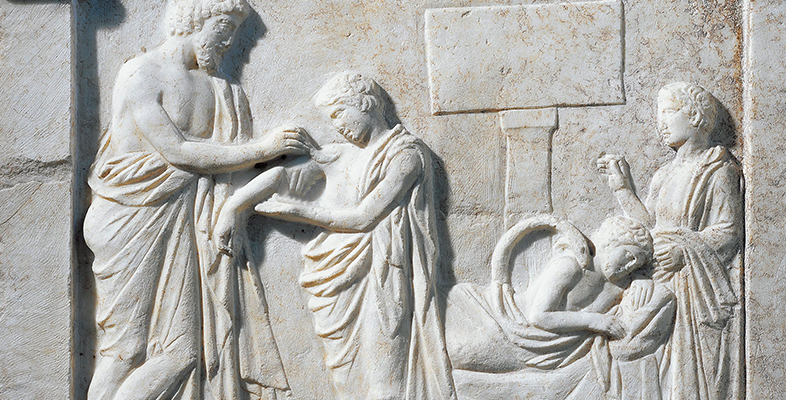4.2 The politics of Amphiaraos’ mythical tradition
As your work on Pausanias’ description of Oropos and the myth of Amphiaraos makes clear, there were several places within Attica and Boiotia which were interested in possessing the territory of Oropos. However, the account of Pausanias also implies that some of these places wanted to place their own mark upon Amphiaraos’ mythological tradition, especially in relation to the stories spun about his demise. Upon fleeing the mythological battle of the Seven Against Thebes the earth opened up to receive Amphiaraos and his chariot, as you learned in Activity 3. The passage by Pausanias seems to imply that different places claimed to be the spot where Amphiaraos disappeared. If this is correct, then claiming to be the site where Amphiaraos disappeared with his chariot was perhaps one way for communities to try and align themselves with his myth and cult.
Communities also tried to relate to the myth and cult of Amphiaraos without explicitly claiming to be the site of his disappearance. The city of Athens, for example, which frequently controlled Oropos and the Amphiareion, never made such a claim. Similarly, the first source to mention Oropos as the place where Amphiaraos disappeared comes very late on (indeed not until the thirteenth century CE), a striking omission given the centrality of Oropos to Amphiaraos’ cult site.
